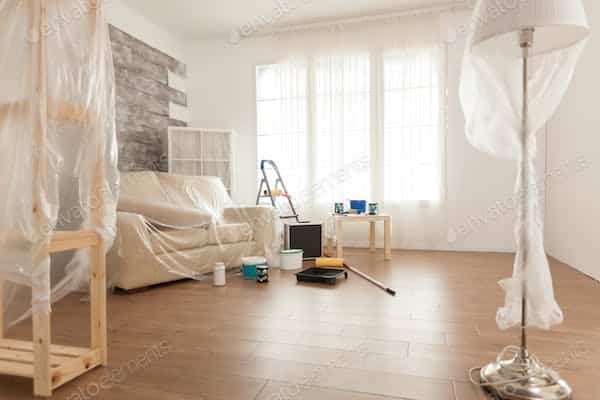How to Plan for an Eco-Friendly Renovation of a UK Historic Home?

Planning for an eco-friendly, sustainable renovation of a UK historic home is a comprehensive project that requires attention to detail, knowledge of heritage buildings, and a commitment to preserving both the original aesthetic of the house and the environment. From insulation to energy efficiency, to the selection of green building materials, every aspect of the renovation impacts not only the final aesthetic of your home but also its environmental footprint. Here are some steps to take when planning an eco-friendly renovation of a UK historic home.
Understanding the Unique Challenges of Renovating Historic Buildings
To start with, historic homes in the UK present unique challenges when it comes to renovations. You’ll need to take into account not only the age and condition of the building but also its historical significance, architectural style, and the materials used in its construction.
A lire en complément : What Are the Best Strategies for Introducing Renewable Energy in UK Rural Areas?
Many historic UK homes were built before the advent of modern insulation and energy-efficient techniques, making them challenging to adapt for eco-friendly living. To work around this, you will have to focus on improving the thermal performance of the house while respecting its historic fabric and charming quirks. In this case, knowledge is indeed power. The better you understand the specifics of your building, the better you’ll be able to make decisions that support both its historic value and energy efficiency.
Choosing the Right Insulation for Historic Homes
The first step in an eco-friendly renovation is to consider your insulation options. Proper insulation can help to reduce energy consumption and lower heating bills, while also making your home more comfortable.
Sujet a lire : What Are the Most Effective Stress Management Tools for UK Professionals?
Insulating a historic UK home is not always straightforward. Traditional materials, like stone and timber, work differently from modern materials and may require special attention. It’s important that the materials and methods used for insulation do not trap moisture within walls, leading to damp and rot issues down the line.
When choosing insulation, opt for sustainable materials that have a low environmental impact and are compatible with the existing building elements. Sheep’s wool, for instance, is a great eco-friendly alternative that works well with old buildings. It’s breathable, which means it allows moisture to pass through, preventing damp and mould.
Implementing Energy-Efficient Measures
Next, think about how you can make the house more energy-efficient. This can be as simple as installing double-glazed windows, draught-proofing doors, or as complex as installing a renewable energy system like solar panels.
A key area to focus on is the kitchen, often the heart of the home and a major source of energy use. Energy-efficient appliances, LED lighting and proper ventilation can all help to reduce energy consumption in this room.
You can also consider installing a smart thermostat which learns your schedule and temperature preferences, adjusting heat settings to optimise both comfort and energy use. Remember, every energy-efficient measure you implement will contribute to a more sustainable home.
Selecting Eco-Friendly Building Materials
Choosing eco-friendly building materials is another crucial part of planning an eco-friendly renovation. This means opting for materials that are sustainably sourced, have low embodied energy, are long-lasting, and can be recycled or disposed of with minimal impact on the environment.
For a historic UK home, you’ll need to find a balance between choosing materials that maintain the character and authenticity of the building while being eco-friendly. Reclaimed timber, for instance, is a great option that ticks both boxes. It’s a sustainable choice that can blend seamlessly with the historic fabric of the home.
When thinking about the design and layout of your renovation, consider how you can maximise natural light to reduce the need for artificial lighting. Incorporating more open spaces can improve air circulation, reducing the need for mechanical ventilation.
Working with the Right Professionals
Lastly, ensure you work with professionals who are experienced in sustainable renovations of historic homes. This will help to ensure that all work carried out is respectful of the building’s historic character and that the most effective eco-friendly solutions are implemented.
Finding a team with the right expertise can be challenging, but it’s worth the effort. Professionals who understand the intricacies of old buildings and who are committed to eco-friendly practices can guide you through the renovation process, ensuring you achieve your sustainable renovation goals.
In conclusion, planning an eco-friendly renovation of a UK historic home can be a challenging yet rewarding task. It requires a balance between respecting the historic character of the building and implementing modern energy-efficient solutions. With careful planning, the right materials, and the right professionals, you can create a home that is not only full of historic charm but also an eco-friendly haven.
Incorporating Renewable Energy Systems
As part of your eco-friendly renovation, it’s essential to include renewable energy systems. These systems can significantly reduce your reliance on fossil fuels and decrease your carbon emissions, leading to a greener, more sustainable home. Solar panels and heat pumps, for instance, are ideal renewable energy sources.
Solar panels can convert sunlight directly into electricity, reducing the amount of grid-based electricity you need. UK historic homes often have large, unobstructed roofs, making them excellent candidates for solar panels. In addition to generating electricity, they can also provide heat for water systems.
Heat pumps, on the other hand, are devices that extract heat from one place and transfer it to another, either for heating or cooling purposes. Ground source heat pumps utilise subterranean heat, while air source heat pumps draw heat from the outside air. These systems can be more energy efficient than traditional heating systems and can be integrated into the existing infrastructure of historic homes with minimal aesthetic impact.
However, you need to be aware of the local building regulations and, in some cases, apply for planning permission before installing these systems, especially in a historic home. Make sure to consult with an architectural design expert who is familiar with the regulations surrounding historic buildings in the UK.
Understanding the Importance of Windows and Doors
Windows and doors play a crucial role in energy efficiency. In historic homes, these can often be areas where heat is easily lost, making them a prime focus for eco-friendly renovations. Replacing old, draughty windows and doors with double or triple-glazed versions can significantly improve the insulation of the house, reducing energy consumption and carbon emissions.
Windows can also contribute to the natural lighting in your home, reducing the need for artificial light. When planning your renovation, consider where you can add windows to maximise daylight exposure. However, any alterations to the façade of historic homes need to be made sensitively, maintaining the original architectural design.
When choosing doors, opt for ones that offer good insulation properties. Insulated metal or solid wood doors can be effective in preventing heat loss. Also, consider draught-proofing existing doors where possible.
Selecting the right windows and doors is not only a matter of energy efficiency. It’s about preserving the historical aesthetic of the home while incorporating modern, eco-friendly features.
Conclusion
Embarking on an eco-friendly renovation of a UK historic home is a journey that requires careful planning, deep understanding of the house’s original design, and commitment to environmental sustainability. The processes involved—from choosing suitable insulation to incorporating energy-efficient appliances, selecting eco-friendly building materials to integrating renewable energy systems—all play a vital role in ensuring that your home is not only a historical gem but also a green and eco-friendly haven.
Remember, it’s vital to work with professionals who have a solid understanding of both the historical aspects and the eco-friendly requirements of these renovations. They will help to ensure you meet all the necessary regulations and planning permissions, guiding you through each step to create a home that beautifully melds past and present, heritage and sustainability. The result will be a historic home, warmed not only by its rich history but also by the knowledge that it’s contributing to a cleaner, greener future.
